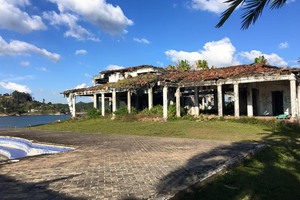
David Bowie during the Young Americans tour. (Photo: Hunter Desportes/CC BY 2.0)
A new retrospective box set of David Bowie’s music (Who Can I Be Now? (1974-1976)) is set to hit the streets in just a few days, and for the first time ever, it is going to include his “unreleased” album, The Gouster. The album was recorded in 1974 around the same time as Young Americans, and is seen as a sort of darker version of that album. While many of the songs from The Gouster, such as “John, I’m Only Dancing (Again)” and even “Young Americans” would be released as singles or on other albums, never before have they been released in their original album.
While the box set will finally recreate the album as it was seemingly intended, the strange name itself says a great deal about the attitude Bowie wanted the record to convey. But what is a "Gouster"?
The term “Gouster” refers to an African-American youth subculture that popped up in Chicago’s South Side in the early 1960s. According to one reading of the term on the Language Hat blog, the word has Scottish roots, originally meaning, “A violent or unmanageable person, a swaggering fellow.” This origin seems to fit with what the Gousters became in 20th century Chicago, with their bad-boy attitudes, and ne'er-do-well reputations. The Gouster trend didn’t last long, and what we know about it seems to come mainly from the recollections of those who lived it.
Like almost every youth subculture from the beginning of time, much of Gouster culture revolved around fashion. Chicago’s Gousters adopted the style and swagger of the local old school gangsters of previous decades. There are scant few images of actual Gousters available online, but one of the more prominent recollections of Gouster culture, in a 2013 post to a blog called Boomacious, gives some idea of their general look. To wit:
“A Gouster’s style was dress-casual. He wore loose fitting, almost baggy clothes. His fine wool, alpaca and mohair sweater had three buttons at the neck, with a lazy, turned down collar. Pants with two pleats at the waist left a little room in the leg so that a Gouster could pimp.”
Another post on the Remembering Chicago During the 1950-1965 blog says of the style, “Gousters were very neat and loved their pleats.”
Gouster fashion shared some common DNA with the clean, but ostentatious, look of zoot suits. True Gousters could often be found sporting suspenders, fedoras, or even carrying a cane. The idea, as ever, was to look the coolest. Women could be Gousters too, and their outfits tended toward pleated skirts accented with nylons and pearls.
But it wasn’t only about the clothes. Dancing was a big part of Gouster culture as well. In an interview in BluesSpeak: The Best of the Original Chicago Blues Annual, legendary Chicago radio personality Herb Kent, said that Gousters had their own club spots like the Peps and the Persian Ballroom, as well as their own styles of dance, such as the Gouster Bop and the Gouster Walk. In that same Boomacious post, she says, “If a guy could Bop, he was king of the night.”
Of course Gousters weren’t the only crowd on the scene in the early '60s. They were directly opposed by anyone who identified as an Ivy Leaguer. In opposition to the loose, swaggering suits worn by Gousters, Ivys wore tight fitting Brooks Brothers outfits, cultivating a clean-cut collegiate look. They were the Socs to the Gousters’ Greasers. The divide was stark and ubiquitous among early '60s Chicago teens. In his autobiography, The Cool Gent, Kent says that you were either an Ivy or a Gouster and there was no in-between, although the actual conflicts were much tamer than today.
“Gousters just always tried to outdo the Ivies in everything. The Competition was there in the form of dressing, dancing, and even getting girls." he wrote. He also notes that when a fight would break out, the rough-and-tumble Gousters usually came out on top.
By the mid-1960s, both Gousters and Ivies and sort of fallen by the wayside as trends changed, but Bowie never forgot the coolness those Chicago teens exuded. As noted on Rolling Stone, in the notes from Who Can I Be Now? (1974-1976), Bowie’s close friend, Tony Visconti, shed some light on the musician’s choice to name his album after an obscure Chicago trend.“Gouster was a word unfamiliar to me but David knew it as a type of dress code worn by African American teens in the ‘60s, in Chicago," he told the magazine, "But in the context of the album its meaning was attitude, an attitude of pride and hipness.” Even if he didn’t experience it himself, Bowie seemed to understand that “pride and hipness” were what the Gousters were all about.
































